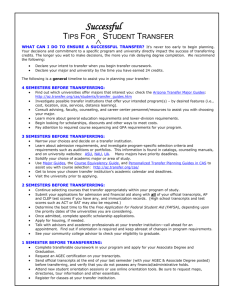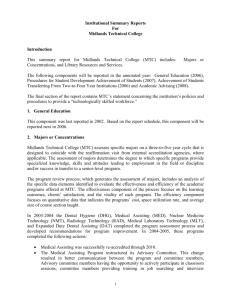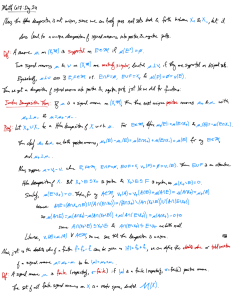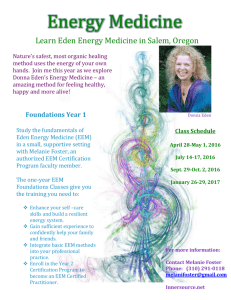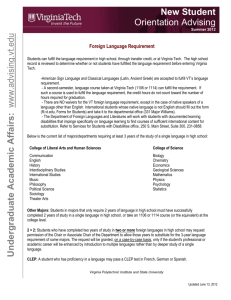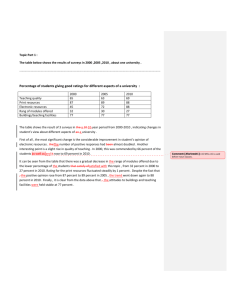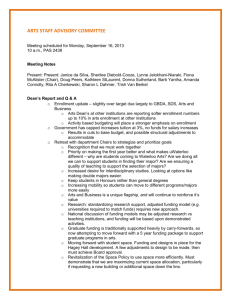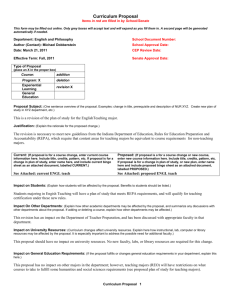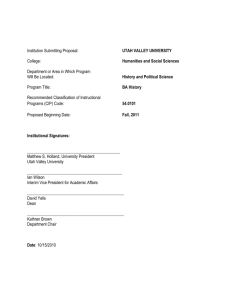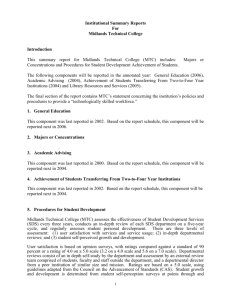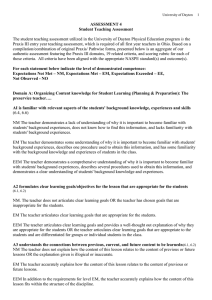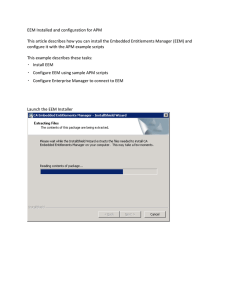2001 - Midlands Technical College
advertisement
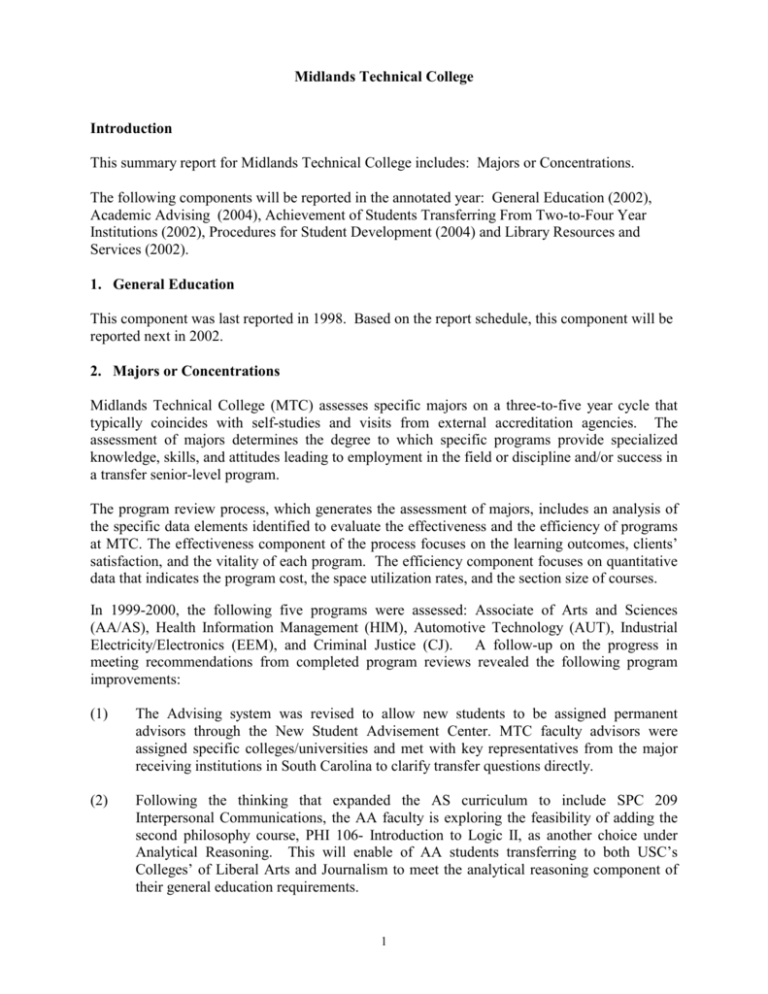
Midlands Technical College Introduction This summary report for Midlands Technical College includes: Majors or Concentrations. The following components will be reported in the annotated year: General Education (2002), Academic Advising (2004), Achievement of Students Transferring From Two-to-Four Year Institutions (2002), Procedures for Student Development (2004) and Library Resources and Services (2002). 1. General Education This component was last reported in 1998. Based on the report schedule, this component will be reported next in 2002. 2. Majors or Concentrations Midlands Technical College (MTC) assesses specific majors on a three-to-five year cycle that typically coincides with self-studies and visits from external accreditation agencies. The assessment of majors determines the degree to which specific programs provide specialized knowledge, skills, and attitudes leading to employment in the field or discipline and/or success in a transfer senior-level program. The program review process, which generates the assessment of majors, includes an analysis of the specific data elements identified to evaluate the effectiveness and the efficiency of programs at MTC. The effectiveness component of the process focuses on the learning outcomes, clients’ satisfaction, and the vitality of each program. The efficiency component focuses on quantitative data that indicates the program cost, the space utilization rates, and the section size of courses. In 1999-2000, the following five programs were assessed: Associate of Arts and Sciences (AA/AS), Health Information Management (HIM), Automotive Technology (AUT), Industrial Electricity/Electronics (EEM), and Criminal Justice (CJ). A follow-up on the progress in meeting recommendations from completed program reviews revealed the following program improvements: (1) The Advising system was revised to allow new students to be assigned permanent advisors through the New Student Advisement Center. MTC faculty advisors were assigned specific colleges/universities and met with key representatives from the major receiving institutions in South Carolina to clarify transfer questions directly. (2) Following the thinking that expanded the AS curriculum to include SPC 209 Interpersonal Communications, the AA faculty is exploring the feasibility of adding the second philosophy course, PHI 106- Introduction to Logic II, as another choice under Analytical Reasoning. This will enable of AA students transferring to both USC’s Colleges’ of Liberal Arts and Journalism to meet the analytical reasoning component of their general education requirements. 1 (3) AA/AS is exploring a strategy to improve the opportunity for its students to graduate prior to transferring. (3) The Automotive program developed and implemented new processes to ensure that all students eligible for graduation received the appropriate award. (4) To address the need for improving the communication, computer and organizational skill of graduates, the EEM department now assigns class work which requires students to use the computer to access the Internet and use WEB resources to research electrical companies and contractors to ascertain specific information regarding the company and related to the curriculum. This includes information related to the size, location, salary, and employment possibilities with the company as well as information on how to submit/write resumes, the price of equipment, how to order equipment and how to estimate the cost of doing a small job. (5) The EEM department was successful in getting the EEM instructional facility renovation scheduled for summer 2001 to address issues regarding the size and learning environment of the current facility. (6) The Criminal Justice program developed a designated section of COL 105, Freshman Seminar, which focused heavily on criminal justice professions, career opportunities, and addressed issues of commitment and loyalty to the Criminal Justice profession. (7) The Health Information Management (HIM) program addressed the need to expose its students to new technology by installing the Computerized Patient Record (CPR) MedicWare software in the student lab (SA 124). Two objectives were identified for the 2000-2001 action plan. They were: (A) establish a process to systematically review the program review findings that includes the Vice President for Education, Associate Vice President for Education, and other upper level groups of the college’s administration and (B) monitor the progress of program recommendations from completed program reviews. Two objectives have been identified for the College's 2001-2002 operational plan. They are (1) assess current processes and data elements to determine relativity of the data elements and develop computer applications to increase the efficiency of collecting and disseminating data germane to the study; and (2) continue to monitor the progress of program recommendations from completed reviews. 3. Academic Advising This component was last reported in 2000. Based on the report schedule, this component will be reported next in 2004. 4. Achievement of Students Transferring From Two-to-Four Year Institutions This component was last reported in 2000. Based on the report schedule, this component will be reported next in 2002. 2 5. Procedures for Student Development This component was last reported in 2000. Based on the report schedule, this component will be reported next in 2004. 6. Library Resources and Services This component was last reported in 1998. Based on the report schedule, this component will be reported next in 2002. 3
